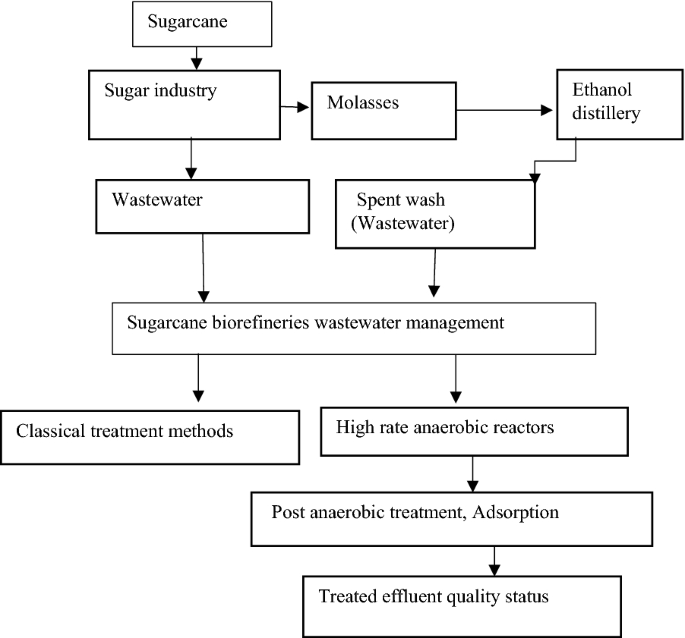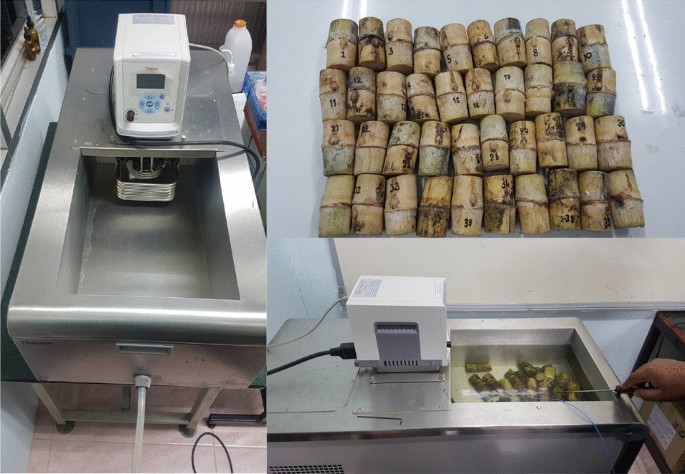The Future of Green Innovation: Spotlight on Products From Sugarcane
The Future of Green Innovation: Spotlight on Products From Sugarcane
Blog Article
Discover the Innovative Benefits of Products From Sugarcane for Lasting Living
Sugarcane has actually become a critical source in the pursuit for sustainable living. Its diverse applications cover naturally degradable packaging, sustainable energy, and much healthier food options. As markets seek environment-friendly alternatives, sugarcane's flexibility offers promising services. The true potential of sugarcane expands beyond its existing usages. Exploring its innovative advantages could reveal brand-new pathways towards an extra sustainable future. What other opportunities might this impressive plant hold?

The Increase of Sugarcane as a Lasting Source
As global recognition of ecological concerns grows, sugarcane has actually become a popular sustainable source. This functional crop offers a selection of benefits that add to environmentally friendly methods. Sugarcane is a renewable resource, capable of prospering in diverse environments while absorbing co2, therefore minimizing greenhouse gas emissions. Its fast growth cycle enables frequent harvesting, causing a continuous supply of raw material.Additionally, sugarcane growing frequently requires less water contrasted to other crops, making it an effective alternative in water-scarce regions. The byproducts of sugarcane, such as bagasse and molasses, can be repurposed for various applications, decreasing waste and advertising circular economic situation principles. Additionally, innovations in agricultural techniques have brought about even more lasting farming methods, further improving sugarcane's ecological account. As consumers significantly look for sustainable options, sugarcane stands apart as a viable option for those devoted to reducing their ecological impact.
Biodegradable Product Packaging Solutions
How can naturally degradable packaging services transform the means consumers approach sustainability? By utilizing sugarcane-based products, these ingenious remedies provide a compelling choice to typical plastics. Biodegradable product packaging made from sugarcane decomposes naturally, substantially decreasing landfill waste and greenhouse gas emissions. As customers become increasingly familiar with their ecological impact, the demand for lasting product packaging remains to rise.These sugarcane-derived items not just serve functional purposes however additionally line up with eco-conscious consumer worths. They provide a substantial way for companies and individuals to add to a round economic climate, promoting resource effectiveness and reducing ecological footprints. In addition, as industries adopt eco-friendly choices, they foster a society of sustainability that resonates with a growing demographic seeking liable choices.In essence, biodegradable product packaging remedies from sugarcane stand for a crucial progression in lasting practices, equipping customers to make eco-friendly choices without giving up convenience or top quality.
Renewable Resource Generation From Sugarcane
A substantial part of renewable energy generation can be acquired from sugarcane, showcasing its flexibility past traditional agricultural uses. Sugarcane biomass, including bagasse and leaves, is a powerful source for bioenergy production. This biomass can be converted right into biofuels such as ethanol, which functions as a cleaner alternative to fossil fuels. Furthermore, the combustion of sugarcane results generates vapor and electrical power, giving a power resource for sugar mills and neighboring communities.The cultivation of sugarcane likewise adds to carbon sequestration, as the plants soak up carbon dioxide throughout their growth cycle. By making use of sugarcane for power, waste is reduced, and lasting practices are urged. This renewable resource approach not only supports energy needs yet likewise promotes country advancement, developing jobs in bioenergy sectors. On the whole, sugarcane sticks out as a principal in the shift to lasting power services, straightening with global efforts to lower carbon footprints.
%20for%20sugar%20mills%20Manufacturer%20Netsol%20Water.jpg)
Eco-Friendly Textiles and Fabrics
Environmentally friendly textiles and fabrics stemmed from sugarcane present an appealing alternative to typical materials. These eco-friendly alternatives not just decrease environmental influence but likewise use sturdiness and performance comparable to traditional fabrics. Lasting production processes better improve their appeal, making them an integral component of a sustainable lifestyle.
Naturally Degradable Material Options
Why is the modification toward biodegradable textile alternatives important for lasting living? The raising understanding of environmental deterioration has actually motivated a search for alternatives to standard fabrics, which frequently add to pollution and waste. Biodegradable materials, acquired from renewable energies such as sugarcane, use a promising remedy. These materials decay normally, reducing land fill buildup and reducing environmental impact. Additionally, they can assist reduced carbon impacts and reliance on nonrenewable fuel sources. As consumers become more eco-conscious, the need for sustainable textiles expands, motivating manufacturers to introduce and spend in naturally degradable alternatives. This adjustment not only supports sustainable practices however additionally cultivates a round economic climate, paving the means for a much more accountable method to fashion and fabric production.
Toughness and Efficiency
When assessing environment-friendly textiles and textiles, durability and performance are critical aspects. Sugarcane-derived products show remarkable stamina and resilience, making them suitable for different applications. These textiles usually exhibit remarkable moisture-wicking residential or commercial properties, which enhance comfort in daily wear. Furthermore, their natural fibers add to breathability, making certain that garments continue to be fresh and wearable even in demanding problems. The performance of sugarcane-based textiles includes their resistance to tear and put on, enabling products to preserve their stability over time. In addition, these environment-friendly textiles can be dealt with to enhance UV security and tarnish resistance, satisfying the practical needs of customers without compromising sustainability. Ultimately, sugarcane fabrics supply a harmonious her response equilibrium of durability and efficiency, interesting eco mindful individuals.
Lasting Production Procedures
The outstanding durability and performance of sugarcane-derived fabrics are complemented by lasting manufacturing processes that prioritize environmental responsibility. These procedures utilize renewable energies, reducing reliance on fossil gas and lowering carbon here are the findings impacts. By using the by-products of sugarcane cultivation, producers can produce eco-friendly textiles while promoting waste reduction. Advanced methods, such as water-efficient dyeing and biodegradable treatments, further improve the sustainability of these fabrics. Furthermore, using non-toxic chemicals assurances that the manufacturing process does not harm environments or human health and wellness. This commitment to sustainability not only interest ecologically aware consumers however additionally sustains neighborhood economic situations by advertising sustainable farming techniques. On the whole, sugarcane-derived fabrics represent a considerable action towards a greener future in the fashion business.
Sugarcane-Based Biofuels and Their Influence

Sugarcane-based biofuels have become a significant different energy source, offering an eco-friendly service to the world's expanding energy demands. These biofuels, stemmed from the fermentation of sugarcane juice or molasses, provide an even more sustainable alternative contrasted to fossil gas. Their manufacturing process creates lower greenhouse gas exhausts, contributing to environment adjustment mitigation efforts.Additionally, sugarcane biofuels can improve energy safety and security by branching out energy resources and decreasing dependancy on imported oil. The cultivation of sugarcane likewise advertises country growth, developing tasks and boosting local economies.However, worries relating to land usage and food competition linger, as increased biofuel production might influence food supply chains. Sustainable agricultural practices are necessary to stabilizing these guaranteeing and competing passions that biofuel production does not threaten food security. Overall, sugarcane-based biofuels stand for an appealing opportunity for a greener power future, provided that their social and ecological implications are very carefully handled.
Much Healthier Alternatives: Sugarcane in Food Products
While many consumers seek healthier options in their diets, sugarcane items offer a healthy alternative to refined sugars and artificial sweeteners. Derived from the natural removal of sugarcane juice, these items preserve essential nutrients, including minerals and vitamins, that are usually shed in processed sugars. Sugarcane has antioxidants and nutritional fiber, adding to overall health and wellness and wellness.Many health-conscious people are turning to sugarcane syrup and jaggery, which provide a reduced glycemic index compared to traditional sugars, making them appropriate for those taking care of blood glucose levels. Furthermore, sugarcane-derived sugar can improve the taste of different dishes without the negative results linked with synthetic additives.This shift towards natural sweetening representatives not only advertises much better dietary options but likewise aligns with lasting living methods, as sugarcane is a renewable source. Therefore, sugarcane items are arising as desirable alternatives in the domain name of foodstuff.
The Future of Sugarcane in Lasting Advancements
The future of sugarcane is poised to incorporate ingenious applications that extend beyond typical usages. Its prospective as a resource for biodegradable packaging remedies and eco-friendly power resources highlights its function in lasting techniques. Exploring these advancements can substantially affect environmental preservation and source administration.
Biodegradable Packaging Solutions
A boosting variety of business are turning to naturally degradable packaging services acquired from sugarcane as an appealing choice to traditional plastics. These ingenious products, commonly made from sugarcane fibers and bioplastics, disintegrate normally, minimizing the resilient ecological impact linked with traditional plastic waste. By using renewable sources, sugarcane-based product packaging contributes to a much more sustainable production cycle, lining up with international efforts to fight pollution and environment modification. Additionally, these remedies typically keep the resilience and capability needed for different applications, from food containers to shipping materials. As consumer need for environment-friendly options expands, organizations adopting sugarcane packaging not only enhance their brand photo yet likewise play a pivotal function in promoting a circular economic situation, leading the method for a greener future.
Renewable Resource Resources
Eco-friendly packaging solutions are simply one aspect of the broader possibility of sugarcane in promoting sustainability. One more considerable application hinges on renewable resource sources. Sugarcane is a functional crop that can be utilized to create biofuels, such as ethanol, which acts as a cleaner option to fossil fuels. The fermentation procedure of sugarcane juice returns ethanol that can power lorries and create electricity. In addition, the by-products of sugarcane processing, like bagasse, can be utilized to create biomass power, offering a sustainable and reliable technique to harness power. This dual role as both a resource of biofuel and biomass emphasizes sugarcane's capacity in minimizing carbon emissions and supporting a shift to a much more sustainable power landscape in the future.
Frequently Asked Concerns
Exactly How Is Sugarcane Collected Sustainably?
Sugarcane harvesting can be lasting with methods like hands-on cutting, which lessens dirt interruption, and utilizing equipment that reduces gas usage (Products From Sugarcane). Crop turning and incorporated bug administration even more improve environmental health and promote lasting dirt fertility
What Are the Ecological Influences of Sugarcane Farming?

Can Sugarcane Products Be Reused?
The question of whether sugarcane products can be recycled Homepage discloses a favorable expectation. Several sugarcane-derived products, such as bioplastics and product packaging, are developed for recyclability, contributing to a much more lasting waste management approach within environmental considerations.
Exist Any Kind Of Disadvantages to Using Sugarcane-Based Products?
The disadvantages of utilizing sugarcane-based products consist of potential land use competition with food crops, obstacles in large manufacturing, and issues regarding the environmental effect of monoculture farming methods, which can lessen biodiversity and dirt health.
Just How Does Sugarcane Cultivation Affect Local Communities?
Sugarcane farming effects local neighborhoods by giving employment possibility and boosting neighborhood economic situations. However, it can also cause land disagreements and ecological concerns, impacting farming techniques and area wellness, requiring a balanced approach to development. Advancements in farming methods have led to even more sustainable farming methods, further boosting sugarcane's ecological account. In addition, the burning of sugarcane results creates steam and power, supplying a power source for sugar mills and nearby communities.The growing of sugarcane also contributes to carbon sequestration, as the plants soak up carbon dioxide during their development cycle. By using sugarcane for energy, waste is reduced, and sustainable techniques are motivated - Products From Sugarcane. Sugarcane has anti-oxidants and nutritional fiber, contributing to total health and wellness.Many health-conscious individuals are transforming to sugarcane syrup and jaggery, which supply a reduced glycemic index compared to traditional sugars, making them appropriate for those managing blood sugar levels. Additionally, the results of sugarcane handling, like bagasse, can be used to generate biomass energy, providing a effective and lasting approach to harness energy
Report this page